WE BUILD A 2008 HONDA CRF450 THAT BLOWS NEW BIKES AWAY
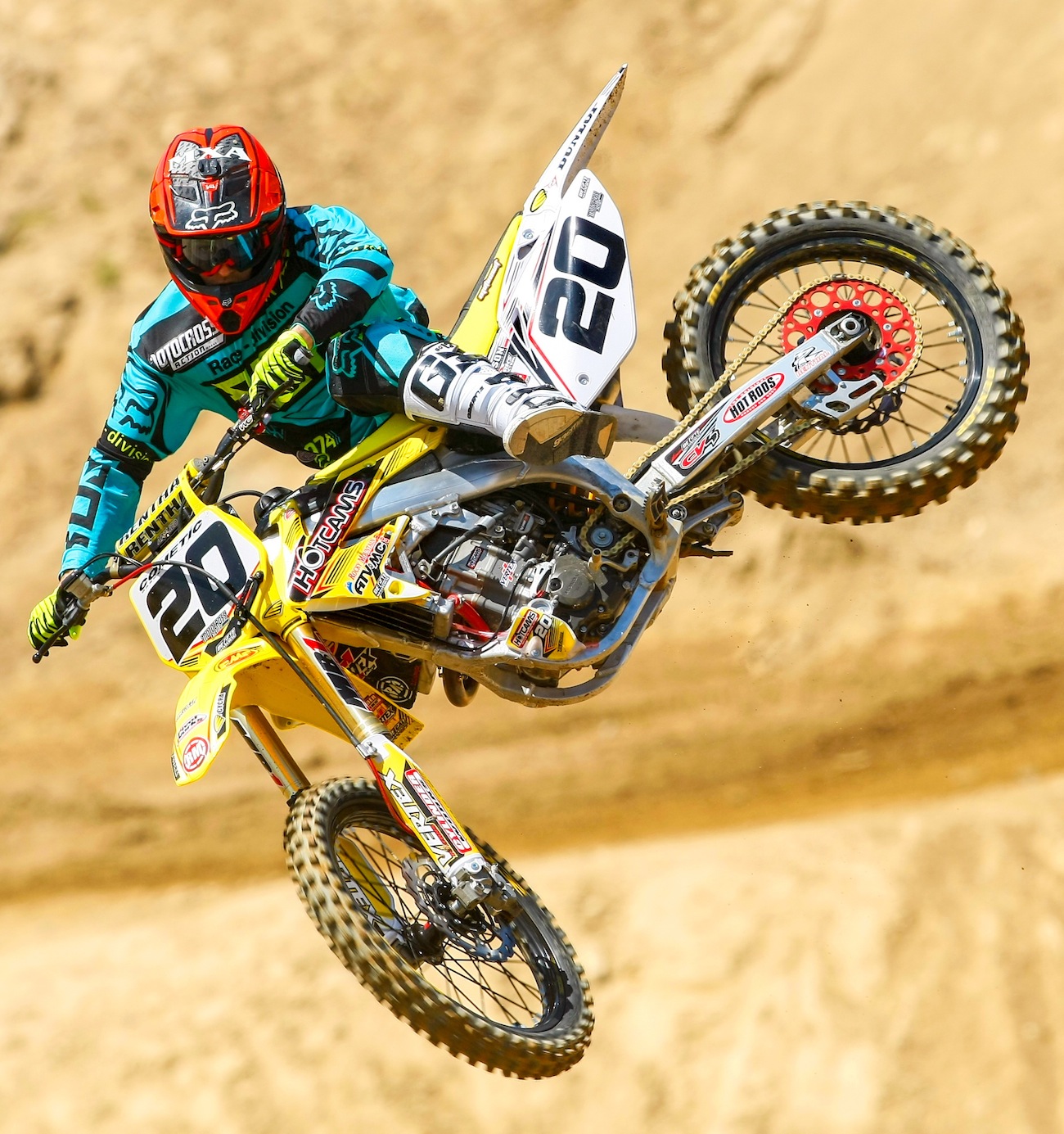 As the years pass our memories fade about how great the 2008 Honda CRF450 was, and still could be. When compared against the latest Honda CRF450 models brings it all comes back into focus.
As the years pass our memories fade about how great the 2008 Honda CRF450 was, and still could be. When compared against the latest Honda CRF450 models brings it all comes back into focus.
As time marches on with each passing model year, we are reminded more and more that the 2008 Honda CRF450 was a true classic. It was the bike every manufacturer tried to replicate and every rider wanted to race. The 2008 was lighting fast, bulletproof and the ergonomics were superb. But, 2008 marked the end of an era for Honda. It was the last year the Honda CRF450 would be carbureted. It was also the culmination of ultimate refinement.
The following year Honda unveiled a radically new 2009 CRF450 that was, in our collective opinion, a huge step backwards. The 2009 through 2012 CRF450s had weak engines, shoddy clutches, suspect suspension and bizarre handling traits. As amazing as the 2008 CRF450 was (it was the last time that Honda won MXA’s 450 Shootout), the bike serves as a reminder of the dangers of living on the cutting edge of technology. Sadly, when Honda ditched the 2008 CRF450 blueprints, they threw the baby out with the bath water. In fact, when Honda introduced the 2017 Honda CRF450, they boldly stated that they used the 2008 CRF450 as their target (to the extent that they flew the old 2008 test riders in to try-out the 2017 to make sure Honda was on the right track).
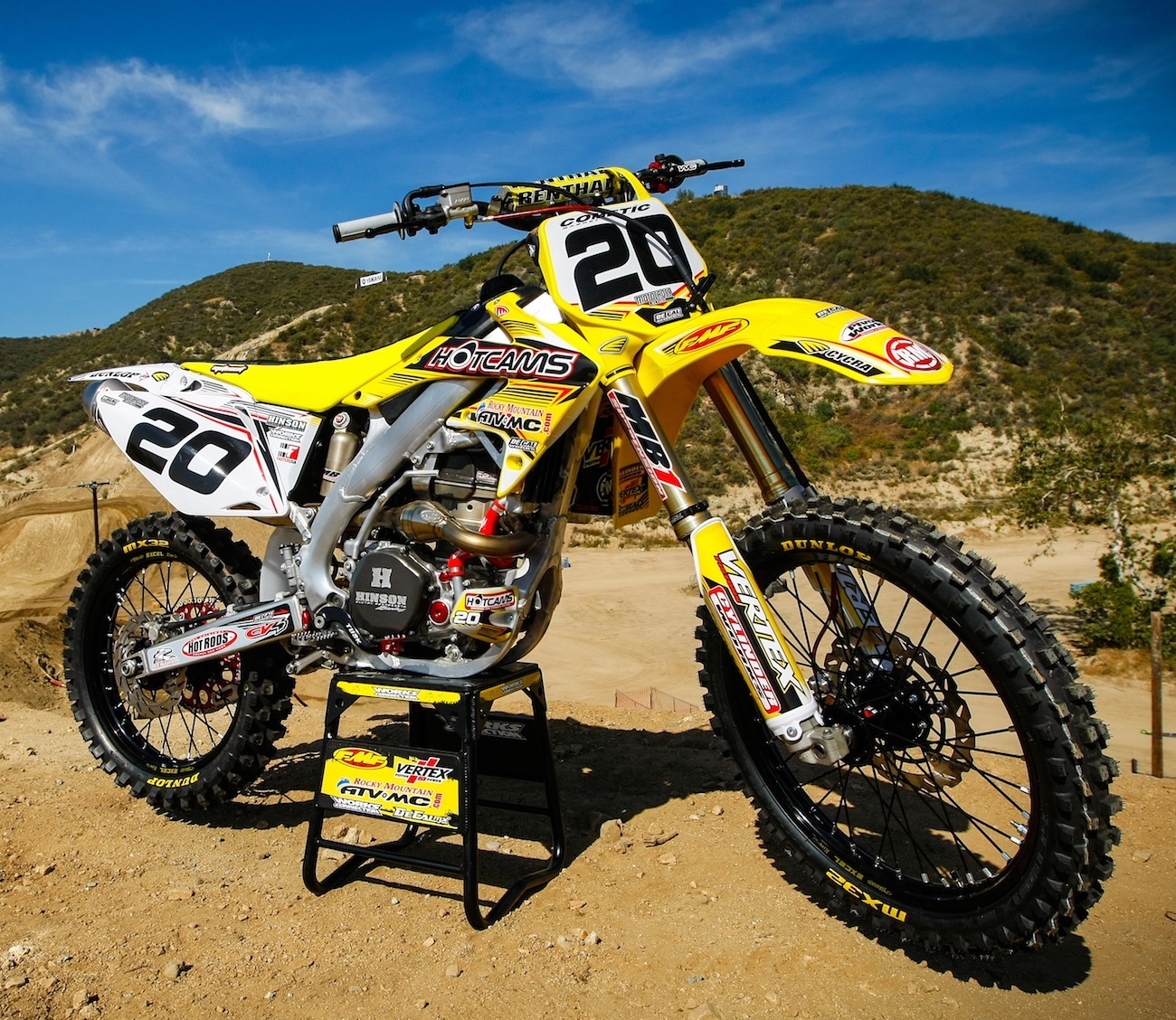 Thanks to Cycra and Decal Works MXA’s 2008 Honda doesn’t look old or tired—although it does mimic a Suzuki with the yellow color palette.
Thanks to Cycra and Decal Works MXA’s 2008 Honda doesn’t look old or tired—although it does mimic a Suzuki with the yellow color palette.
In the years since, the 2008 CRF450 has come up in conversation more times than we can count. It’s a machine that very well could be considered one of the best four-stroke motocross bikes ever produced. Unfortunately, the sands of time have moved us further away from the glory days of the CRF450. We might long for that mighty 2008 model, but with each passing year the venerable “oh-eight” becomes more of a relic than a race bike. Truth be told, though, we wanted to revisit the past, check our six and see if hindsight is 20-20 or 20-450.
OUR PLAN WAS TO REBUILD IT TO THE BEST OF OUR ABILITY, BECAUSE TO DO LESS WOULD DEFEAT THE PURPOSE OF THE PROJECT BEFORE WE EVEN STARTED.
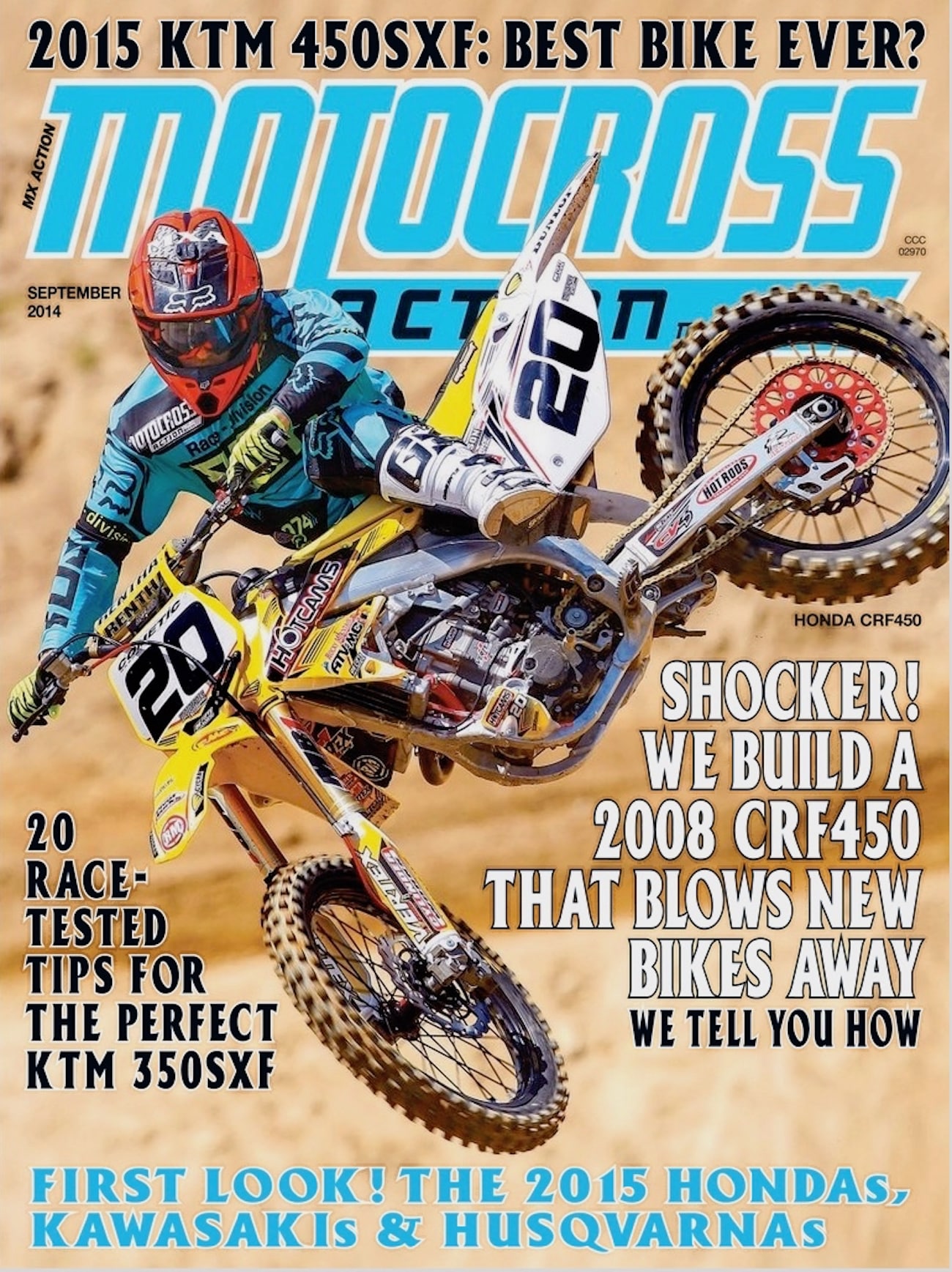 Ten years ago, in the September 2014 issue of MXA, we rebuilt a 2008 Honda CRF450 and outfitted it in yellow plastic to test against the newest CRF450 of the time.
Ten years ago, in the September 2014 issue of MXA, we rebuilt a 2008 Honda CRF450 and outfitted it in yellow plastic to test against the newest CRF450 of the time.
So, you can understand our excitement when we managed to find a 2008 Honda CRF450 that was ripe for an update. Not surprisingly, the bike had been well used and badly abused. Countless hours had been put on the Unicam engine, and routine maintenance was apparently an afterthought. Our prospective 2008 Honda CRF450 time traveler needed some tender-loving care, so we opened our checkbook and went to work. We wanted to build a 10-year old bike that could still win today. That was our target.
Rejuvenating our project CRF450 was a tedious process, but like paging through an old high school yearbook, it made us feel nostalgic. As we disassembled the bike, it felt like we were taking a trip down memory lane. New parts were ordered. The engine was cracked open. The wheels and plastic went into the trash. As a rule, the MXA wrecking crew doesn’t have a set budget for its project bikes; if we did, they would go more over budget than the Abrams M1 tank. Our plan was to rebuild it to the best of our ability, money be damned, because to do less would defeat the purpose of the project before we even started.
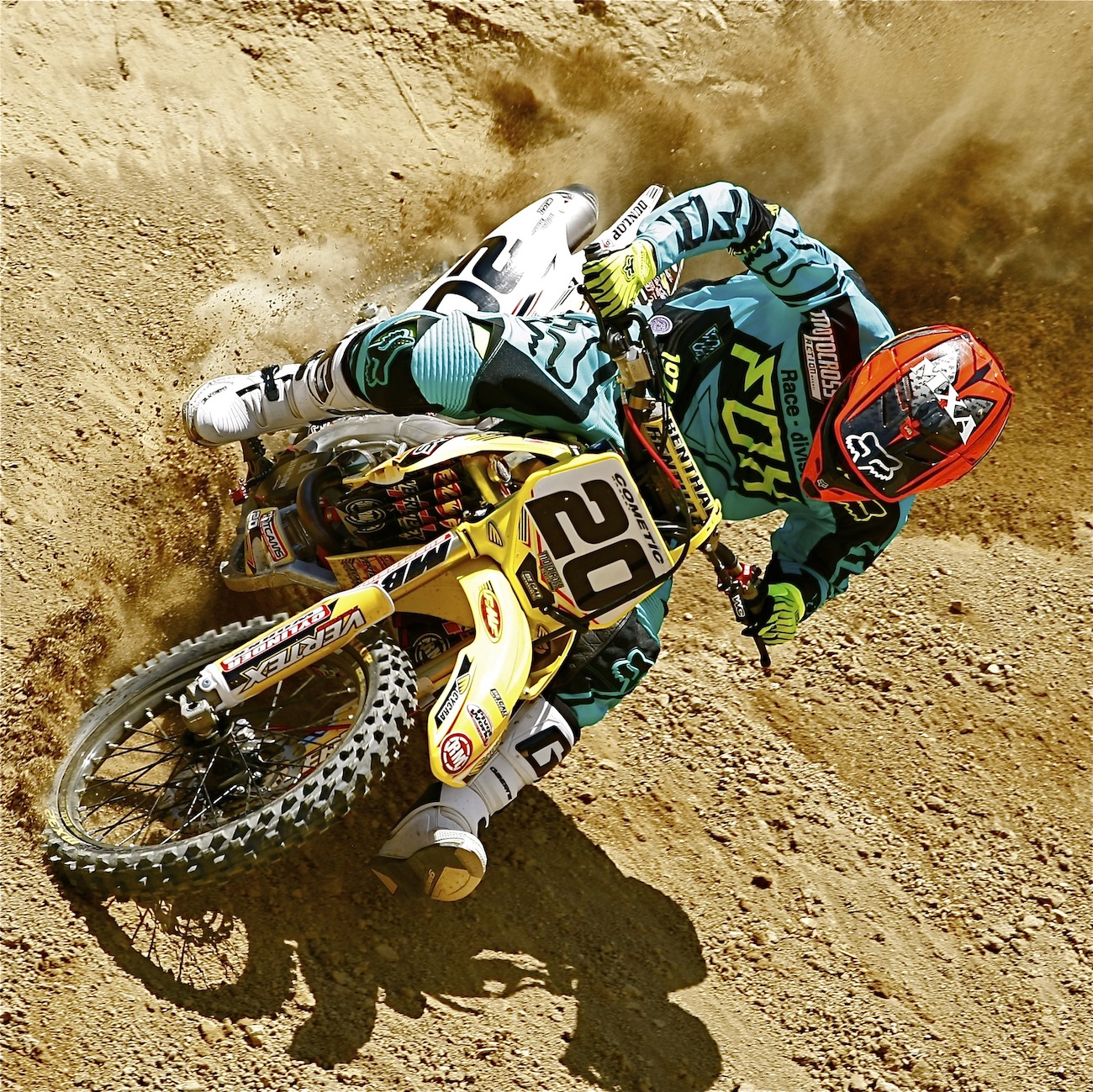 Honda had it all figured out in 2008—then they lost their way for the next 16 years. The 2025 Honda CRF450 is the bike that we think can recapture som eof the CRF450 magic.
Honda had it all figured out in 2008—then they lost their way for the next 16 years. The 2025 Honda CRF450 is the bike that we think can recapture som eof the CRF450 magic.
There was no doubt that we needed new parts. Our bike was old and well-used. Where to start? We started with a Hot Rod bottom-end kit (crankshaft, main bearings and gaskets), new Cylinder Works cylinder (with standard bore), Vertex high-compression piston and Cometic top-end gasket kit. We thought about reusing the cam, but skimping on a complete update seemed criminal, so we opted for a Stage Two Hot Cams setup. We also sprung for a bulletproof Hinson clutch.
 Surprisingly, all these years later our 2008 CRF450 is still competitive with the new technology of modern bikes. It was refreshing to discover how good we had it back in 2008.
Surprisingly, all these years later our 2008 CRF450 is still competitive with the new technology of modern bikes. It was refreshing to discover how good we had it back in 2008.
With a new engine, our next step was to disassemble the Keihin FCR carburetor and clean every nook and cranny of this marvelous artifact of the past. Knowing our way around the tried-and-true Keihin, we employed age-old tactics, such as cutting the diaphragm to zero and wiring the accelerator pump. Problems solved.
Our most obvious update was to the aesthetics. We used a yellow Cycra Racing Powerflow kit and Faster USA wheels mated to Dunlop MX3S tires. With the package complete, it was finally time to rip around the track and have joyous memories of the impeccable 2008 Honda CRF450 come flooding back. The first thing our testers noticed when they hit the track was the heavy feeling of the bike compared to the newer-generation CRF450 models, which are lighter and more aggressive with their cab-forward chassis. Even though the weight difference between old and new was just a few pounds, it was noticeable. Equally noticeable was how much more stable the 2008 chassis felt in the rough. It tracked incredibly straight and wasn’t twitchy like the newer models. But, in the air and at the entrance of corners, it felt like a tank (perhaps an Abrams M1).
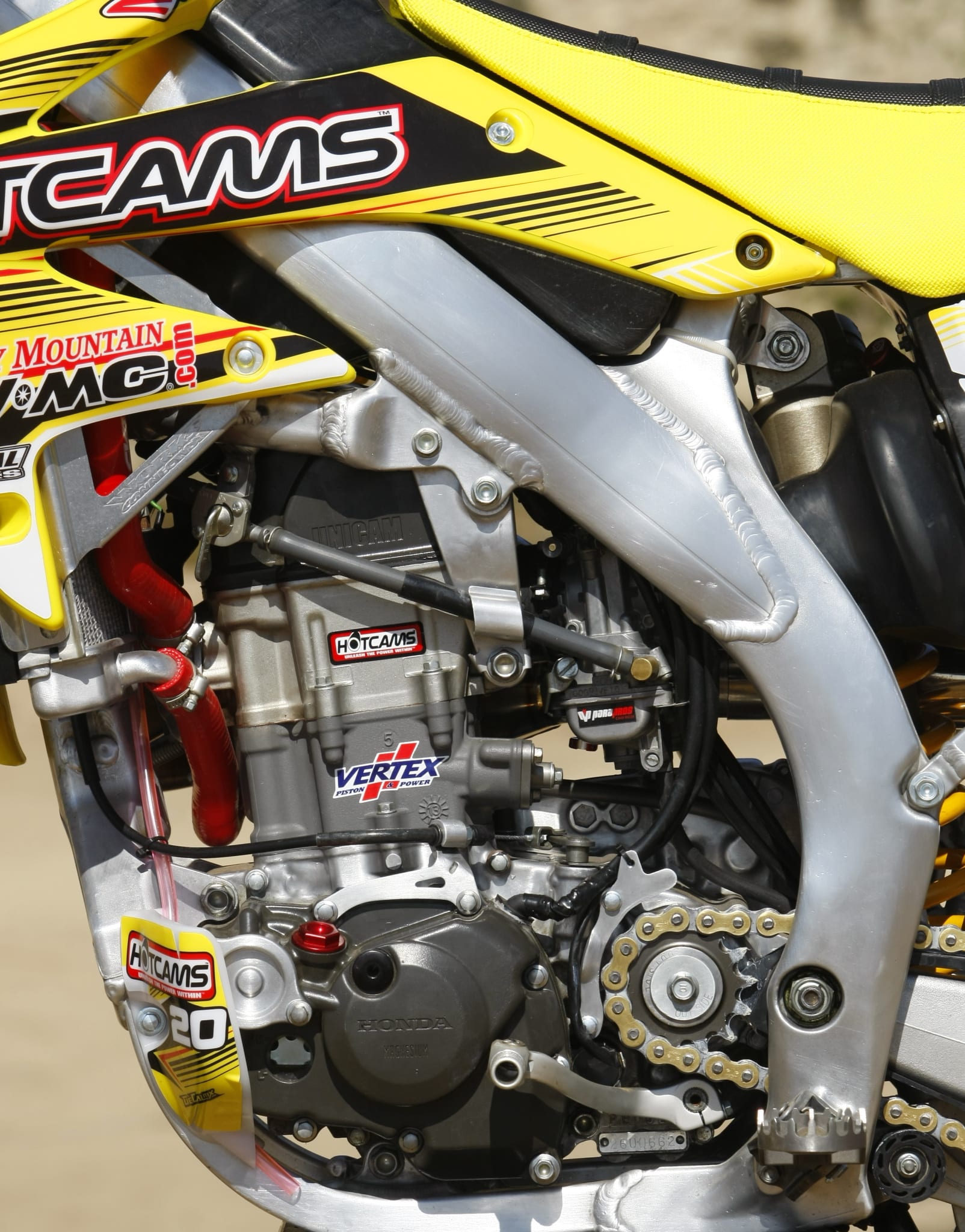 It seems like forever ago that EFI technology took over from carburetors. The power of the old carbureted bikes is remarkable. Yes, we had to deal with jetting issues, but the powerband was sweet.
It seems like forever ago that EFI technology took over from carburetors. The power of the old carbureted bikes is remarkable. Yes, we had to deal with jetting issues, but the powerband was sweet.
Weight aside, we also noticed the raw, unbridled power of the FCR carbureted bike. Don’t let anyone tell you that fuel-injected bikes have more hop-up potential than carbureted bikes. Our 2008 CRF450 was scary fast compared to a 2009-2012 CRF450. The power was explosive, with more than enough bottom and midrange grunt to satisfy our Pro-level testers. It had the ultimately usable powerband that was fast, torquey and manageable. Yes, the engine still signed off a little too early, although not as early as the 2009-2016 CRF450s. Luckily, it has more than enough torque and horsepower to pull the next gear, no matter how soon we shifted.
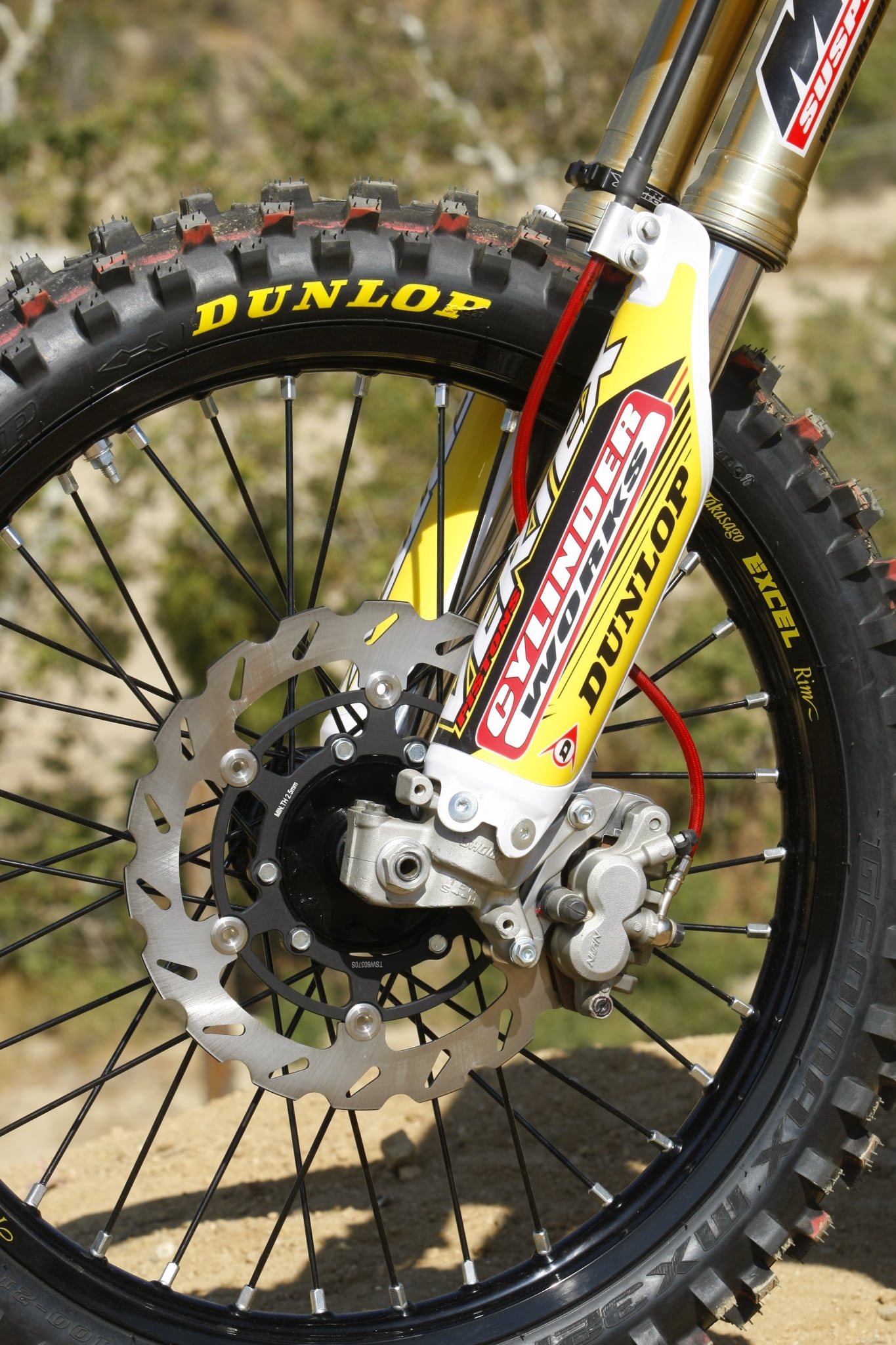 The 2008 CRF450’s 47mm spring fork in stock trim was harsh and stiff. Luckily, MB1 had countless hours of testing on this fork in the past, so their setting was already dialed in. Just a few clicks on the MB1 forks and the harshness was gone.
The 2008 CRF450’s 47mm spring fork in stock trim was harsh and stiff. Luckily, MB1 had countless hours of testing on this fork in the past, so their setting was already dialed in. Just a few clicks on the MB1 forks and the harshness was gone.
Back in 2008, the CRF450 Showa forks had a reputation for being harsh. Knowing this in advance, thanks to eight years of history, our primary goal was to smooth out the harshness. We had Mike Battista work on our forks, because he had been a player at Team Honda during the glory days. The revalved forks were progressive and soaked up the bumps quite well. But, the MXA test riders weren’t so enchanted by the shock setting. The rear end had a tendency to kick like a spooked horse. Fortunately, lessening the sag and stiffening the high-speed compression allowed the bike to ride higher in the stroke and stay as straight as a whistle. If you are a loyal Honda rider, from the 2007 to 2017 speriod, you already have a suspension tuner on speed dial, who fixed your old steed and can fix this one too.
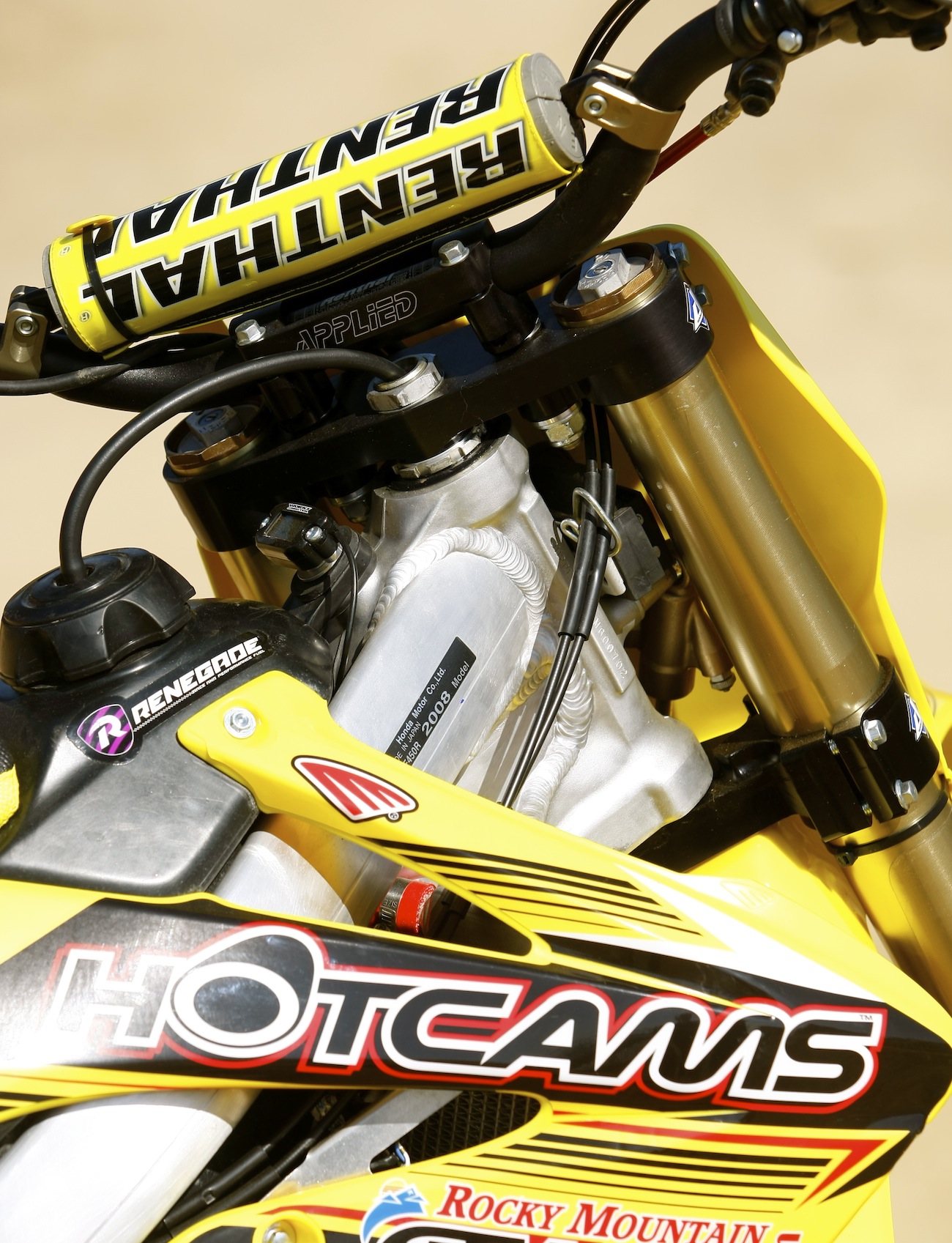 We switched to yellow Cycra plastic, Applied triple clamps, Renthal bars and a Works Connection hour meter.
We switched to yellow Cycra plastic, Applied triple clamps, Renthal bars and a Works Connection hour meter.
Did we like what this old dog had to offer? Absolutely. Could you win on this bike today? You bet. Would we go to the starting line today on a 2008 bike? You bet we would. It may be true that you can’t relive the past, but we wish we could, because we miss the explosiveness of the old carbureted bikes. Not as crisp as EFI bikes, carbureted bikes have the magic ability to produce not just the right amount of power, but that little extra bit when you need it. The 2008 CRF450 is old technology, but it proves that newer isn’t always better.
MXA VIDEO OF OUR 2008 CRF450 PROJECT BIKE
MXA’S 2008 HONDA CRF450 SUPPLIERS
Rocky Mountain: www.rockymountainatvmc.com or (800) 336-5437
Cylinder Works: www.cylinder-works.com or (515) 251-4070
Hot Cams: www.hotcamsinc.com or (515) 402-8200
Hot Rods: www.hotrodsproducts.com or (515) 402-8100
FMF Racing: www.fmfracing.com or (310) 631-4363
Cycra Racing: www.cycraracing.com or (740) 929-0188
CV4: www.cv4.net or (800) 874-1223
Renthal: www.renthal.com or (877) 736-8425
Applied: www.appliedrace.com or (800) 853-0555
Dunlop Tire: www.dunlopmotorcycle.com or (800) 845-8378
DeCal Works: www.decalmx.com or (815) 784-4000
MB1 Suspension: www.mb1suspension.com or (951) 371-5045
Moto Seat: www.motoseat.com or (951) 258-5229
Hinson: www.hinsonracing.com or (909) 946-2942
Tusk: www.tuskoffroad.com or (800) 336-5437
Faster USA: www.fasterusa.com or (951) 600-7048







Comments are closed.